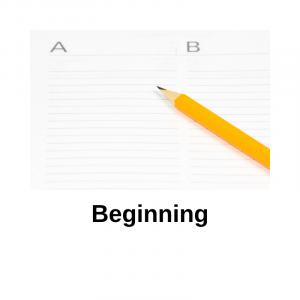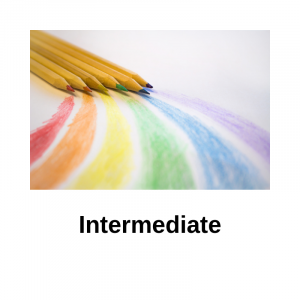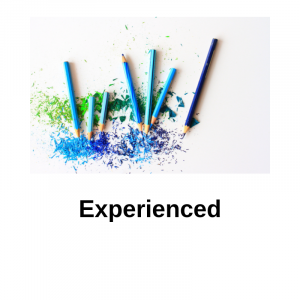21 Writing an Introduction and Conclusion
The introduction and conclusion are the strong walls that hold up the ends of your essay. The introduction should pique the readers’ interest, articulate the aim or purpose of the essay, and provide an outline of how the essay is organised. The conclusion mirrors the introduction in structure and summarizes the main aim and key ideas within the essay, drawing to a logical conclusion. The introduction states what the essay will do and the conclusion tells the reader what the essay has achieved.
Introduction
The primary functions of the introduction are to introduce the topic and aim of the essay, plus provide the reader with a clear framework of how the essay will be structured. Therefore, the following sections provide a brief overview of how these goals can be achieved. The introduction has three basic sections (often in one paragraph if the essay is short) that establish the key elements: background, thesis statement, and essay outline.
Background
The background should arrest the readers’ attention and create an interest in the chosen topic. Therefore, backgrounding on the topic should be factual, interesting, and may use supporting evidence from academic sources. Shorter essays (under 1000 words) may only require 1-3 sentences for backgrounding, so make the information specific and relevant, clear and succinct. Longer essays may call for a separate backgrounding paragraph. Always check with your lecturer/tutor for guidelines on your specific assignment.
Thesis Statement
The thesis statement is a theory, put forward as a position to be maintained or proven by the writing that follows in the essay. It focuses the writer’s ideas within the essay and all insights, arguments and viewpoints centre around this statement. The writer should refer back to it both mentally and literally throughout the writing process, plus the reader should see the key concepts within the thesis unfolding throughout the written work. A separate section about developing the thesis statement has been included below.
Essay Outline Sentence/s
The essay outline is 1-2 sentences that articulate the focus of the essay in stages. They clearly explain how the thesis statement will be addressed in a sequential manner throughout the essay paragraphs. The essay outline should also leave no doubt in the readers’ minds about what is NOT going to be addressed in your essay. You are establishing the parameters, boundaries, or limitations of the essay that follows. Do not, however, use diminishing language such as, “this brief essay will only discuss…”, “this essay hopes to prove/will attempt to show…”. This weakens your position from the outset. Use strong signposting language, such as “This essay will discuss… (paragraph 1) then… (paragraph 2) before moving on to… (paragraph 3) followed by the conclusion and recommendations”. This way the reader knows from the outset how the essay will be structured and it also helps you to better plan your body paragraphs (see Chapter 22).
Brief Example
(Background statement) Nuclear power plants are widely used throughout the world as a clean, efficient source of energy. (Thesis with a single idea) It has been proven that thermonuclear energy (topic) is a clean, safe alternative to burning fossil fuels. (Essay outline sentence) This essay will discuss the environmental, economic, social impacts of having a thermonuclear power plant providing clean energy to a major city.
- Background statement
- Thesis statement – claim
- Essay outline sentence (with three controlling ideas)
Thesis Statement
Regardless of the length of the essay, it should always have a thesis statement that clearly articulates the key aim or argument/s in the essay. It focuses both the readers’ attention and the essay’s purpose. In a purely informative or descriptive essay, the thesis may contain a single, clear claim. Whereas, in a more complex analytical, persuasive, or critical essay (see Chapter 15) there may be more than one claim, or a claim and counter-claim (rebuttal) within the thesis statement (see Chapter 25 – Academic Writing [glossary]). It is important to remember that the majority of academic writing is not only delivering information, it is arguing a position and supporting claims with facts and reliable examples. A strong thesis will be original, specific and arguable. This means it should never be a statement of the obvious or a vague reference to general understandings on a topic.
Weak Thesis Examples
The following examples are too vague and leave too many questions unanswered because they are not specific enough.
“Reading is beneficial” – What type of reading? Reading at what level/age? Reading for what time period? Reading what types of text? How is it beneficial, to who?
“Dogs are better than cats” – Better in what way? What types of dogs in what environment? Domesticated or wild animals? What are the benefits of being a dog owner? Is this about owning a dog or just dogs as a breed?
“Carbon emissions are ruining our planet” – Carbon emissions from where/what? In what specific way is our planet suffering? What is the timeframe of this problem?
A strong thesis should stand up to scrutiny. It should be able to answer the “So what?” question. Why should the reader want to continue reading your essay? What are you going to describe, argue, contest that will fix their attention? If no-one can or would argue with your thesis, then it is too weak, too obvious.
Your thesis statement is your answer to the essay question.
A strong thesis treats the topic of an essay in-depth. It will make an original claim that is both interesting and supportable, plus able to be refuted. In a critical essay this will allow you to argue more than one point of view (see Chapter 27 – Writing a Discursive Essay). Again, this is why it is important that you complete sufficient background reading and research on your topic to write from an informed position.
Strong Thesis Examples
“Parents reading to their children, from age 1-5 years, enhance their children’s vocabulary, their interest in books, and their curiosity about the world around them.”
“Small, domesticated dogs make better companions than domesticated cats because of their loyal and intuitive nature.”
“Carbon emissions from food production and processing are ruining Earth’s atmosphere.”
As demonstrated, by adding a specific focus, and key claim, the above thesis statements are made stronger.
Beginner and intermediate writers may prefer to use a less complex and sequential thesis like those above. They are clear, supportable and arguable. This is all that is required for the Term one and two writing tasks.



Once you become a more proficient writer and advance into essays that are more analytical and critical in nature, you will begin to incorporate more than one perspective in the thesis statement. Again, each additional perspective should be arguable and able to be supported with clear evidence. A thesis for a discursive essay (Term Three) should contain both a claim AND counter-claim, demonstrating your capacity as a writer to develop more than one perspective on a topic.
A Note on Claims and Counter-claims
Demonstrating that there is more than one side to an argument does not weaken your overall position on a topic. It indicates that you have used your analytical thinking skills to identify more than one perspective, potentially including opposing arguments. In your essay you may progress in such a way that refutes or supports the claim and counter-claim.
Please do not confuse the words ‘claim’ and ‘counter-claim’ with moral or value judgements about right/wrong, good/bad, successful/unsuccessful, or the like. The term ‘claim’ simply refers to the first position or argument you put forward, and ‘counter-claim’ is the alternate position or argument.
Discursive Essay Thesis – Examples adapted from previous students
“Although it is argued that renewable energy may not meet the energy needs of Australia, there is research to indicate the benefits of transitioning to more environmentally favourable energy sources now.”
“It is argued that multiculturalism is beneficial for Australian society, economy and culture, however some members of society have a negative view of multiculturalism‘s effects on the country.”
“The widespread adoption of new technologies is inevitable and may benefit society, however, these new technologies could raise ethical issues and therefore might be of detriment.”
Note the use of conjunctive terms (underlined) to indicate alternative perspectives.
In term three you will be given further instruction in developing a thesis statement for a discursive essay in class time.
Conclusion
The conclusion is the final paragraph of the essay and it summarizes and synthesizes the topic and key ideas, including the thesis statement. As such, no new information or citations should be present in the conclusion. It should be written with an authoritative, formal tone as you have taken the time to support all the claims (and counter-claims) in your essay. It should follow the same logical progression as the key points in your essay and reach a clear and well-written conclusion – the statement within the concluding paragraph that makes it very clear you have answered the essay question. Read the marking criteria of your assignment to determine whether you are also required to include a recommendation or prediction as part of the conclusion. If so, make recommendations relevant to the context and content of the essay. They should be creative, specific and realistic. If you are making a prediction, focus on how the information or key arguments used in the essay might impact the world around you, or the field of inquiry, in a realistic way.
A strong, well-written conclusion should draw all of the threads of the essay together and show how they relate to each other and also how they make sense in relation to the essay question and thesis.




make clear, distinct, and precise in relation to other parts
to seize
Synonyms: catch and hold; attract and fix; engage
researched, reliable, written by academics and published by reputable publishers; often, but not always peer reviewed
concise
expressed in few words
assertion, maintain as fact
a claim made to rebut a previous claim
attract and hold
used to link words or phrases together
See 'Language Basics'
able to be trusted as being accurate or true; reliable
decision reached by sound and valid reasoning

